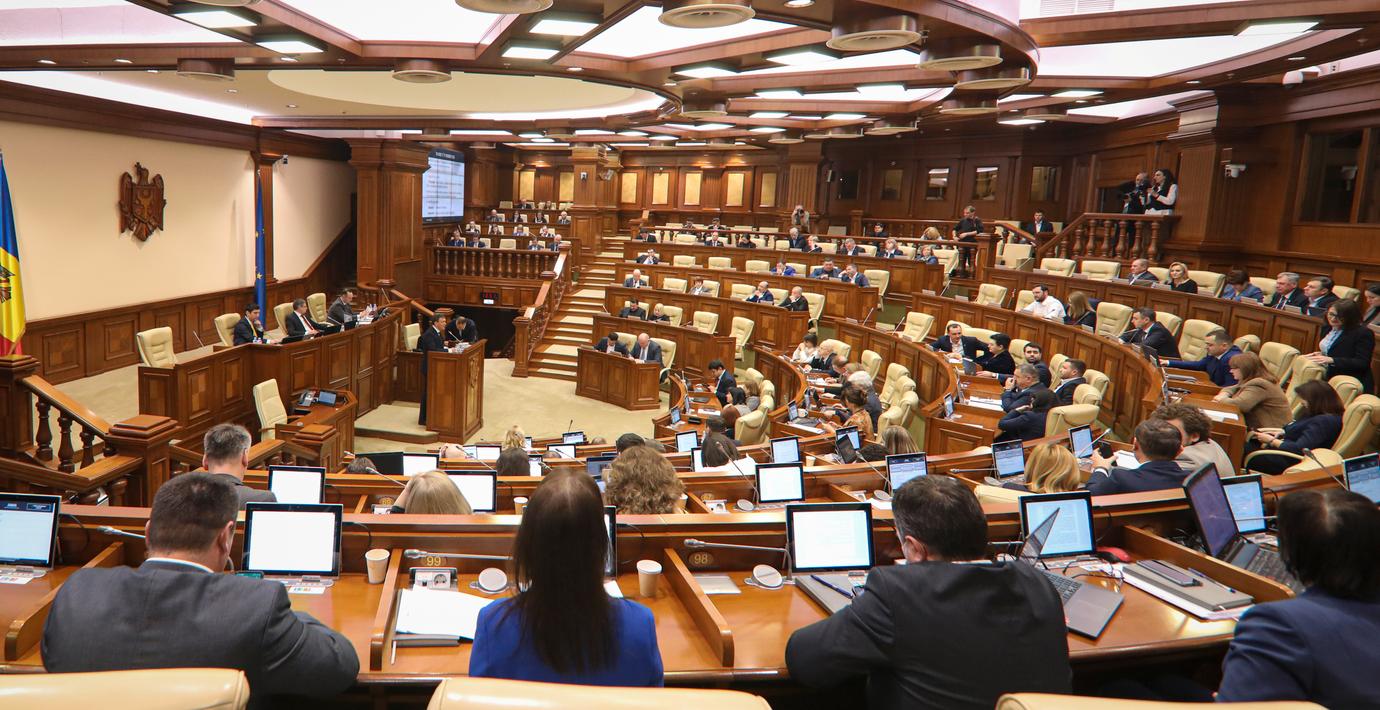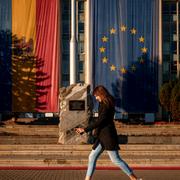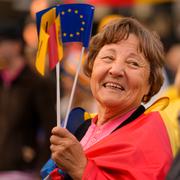
Moldavien byter språk i markering mot Ryssland
Moldaviens parlament har röstat igenom en lag som gör att landets officiella språk nu kommer att kallas rumänska i stället för moldaviska, rapporterar TT.
Moldaviskan är en dialekt av rumänskan och de två är nästintill identiska. Det som främst särskiljer moldaviskan är slaviska låneord som infördes under det sovjetiska styret efter andra världskriget. Då byttes även det latinska alfabetet ut mot det kyrilliska.
Draget ses som ett viktigt steg för att närma sig EU och röra sig bort från historiska band till Ryssland. Ryssvänliga partier har protesterat, och tidigare i år kallade Ryssland lagen ”en anti-rysk resolution”.
bakgrund
Moldaviska
Wikipedia (en)
Moldovan (Latin alphabet: limba moldovenească; Moldovan Cyrillic alphabet: лимба молдовеняскэ), also known historically as Moldavian, is one of the two local names of the Romanian language in Moldova. Moldovan is declared the official language in Article 13 of the constitution adopted in 1994, while the 1991 Declaration of Independence of Moldova uses the name Romanian. In 2003, the Moldovan parliament adopted a law defining Moldovan and Romanian as glottonyms for the same language. In 2013, the Constitutional Court of Moldova interpreted that Article 13 of the constitution is superseded by the Declaration of Independence, thus giving official status to the name Romanian. The breakaway region of Transnistria continues to recognize Moldovan as one of its official languages, alongside Russian and Ukrainian. Ukraine also makes a distinction between Moldovan and Romanian, with one village declaring its language to be Romanian and another declaring it to be Moldovan, though Ukrainian officials have announced an intention to remove the legal status of Moldovan.The language of the Moldovans had historically been identified by both terms, however, during the Soviet Union, Moldovan, or, as it was called at the time, Moldavian, was the only term officially recognized. Soviet policy emphasized distinctions between Moldavians and Romanians based on their allegedly different histories. Its resolution declared Moldavian a distinct Romance language from Romanian.
While a majority of inhabitants of the capital city of Chișinău and, according to surveys, people with higher education call their language Romanian, most rural residents indicated Moldovan as their native language in the 2004 census. In schools in Moldova, the term "Romanian language" has been used since independence.The variety of Romanian spoken in Moldova is the Moldavian subdialect, which is spread approximately within the territory of the former Principality of Moldavia (now split between Moldova, Romania, and Ukraine). Moldavian is considered one of the five major spoken varieties of Romanian. However, all five are written identically, and Moldova and Romania share the same literary language.The standard alphabet used in Moldova is equivalent to the Romanian alphabet, which is based on the Latin alphabet. Until 1918, varieties of the Romanian Cyrillic alphabet were used. The Moldovan Cyrillic alphabet (derived from the Russian alphabet and standardised in the Soviet Union) was used in 1924–1932 and 1938–1989 and remains in use in Transnistria.
Omni är politiskt obundna och oberoende. Vi strävar efter att ge fler perspektiv på nyheterna. Har du frågor eller synpunkter kring vår rapportering? Kontakta redaktionen



